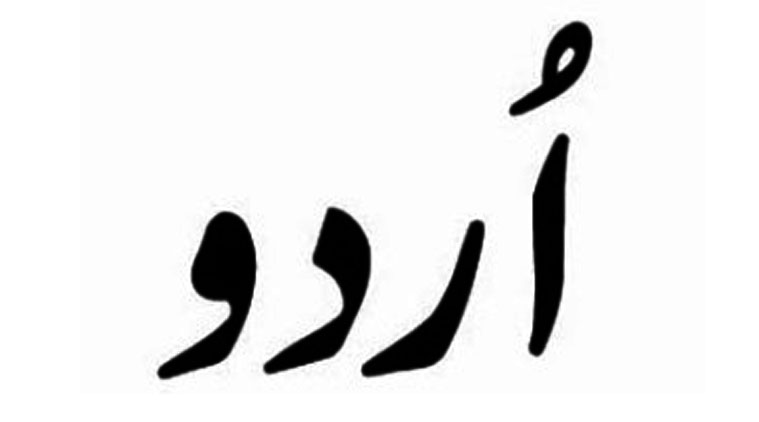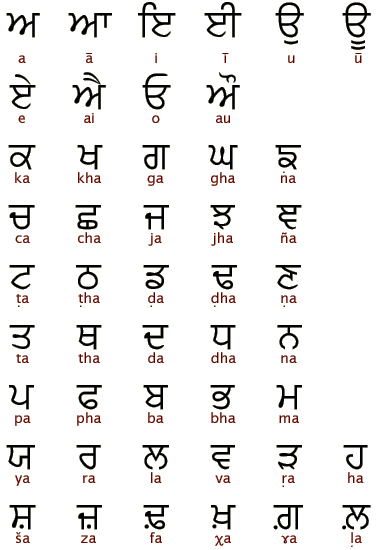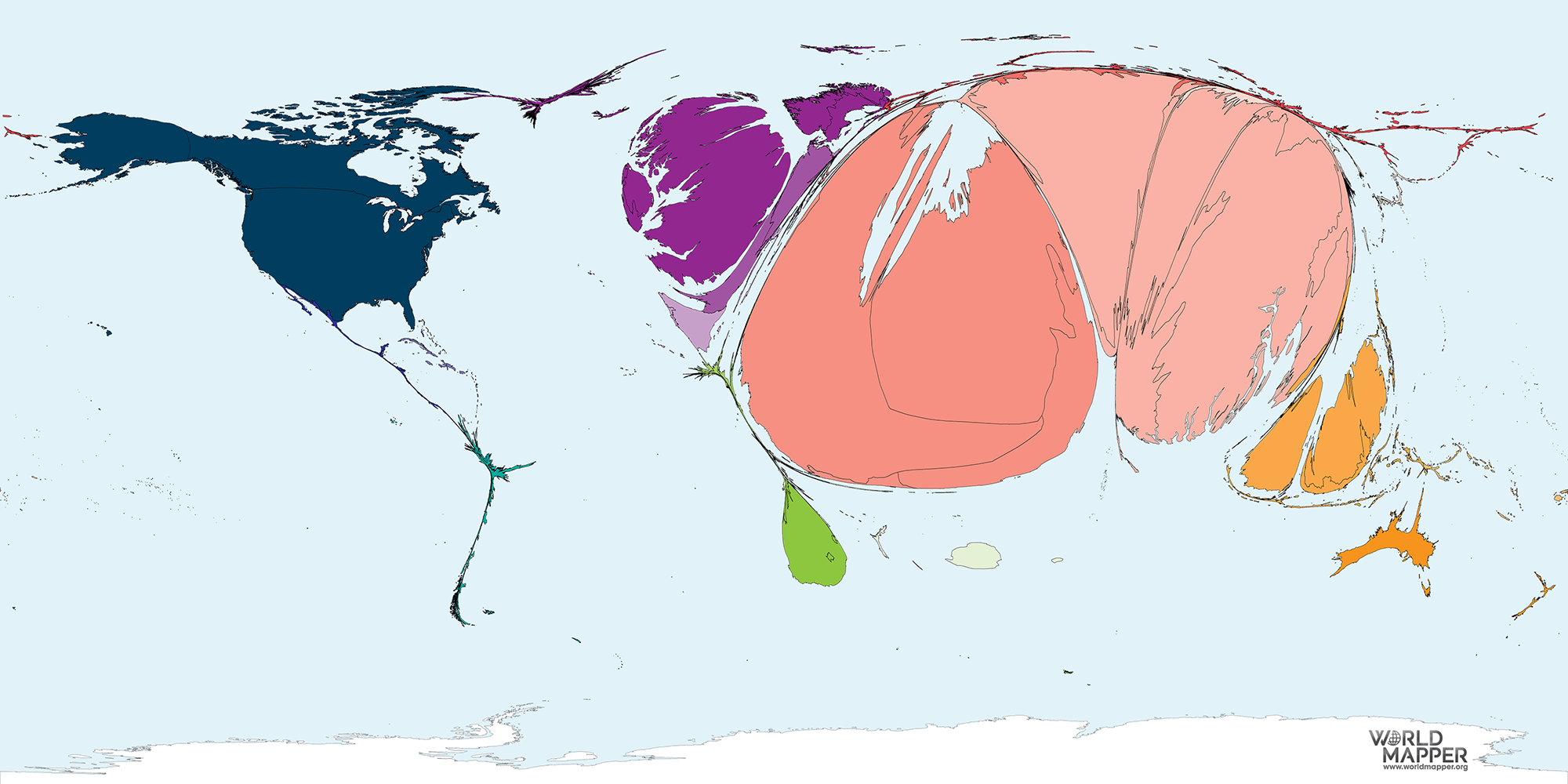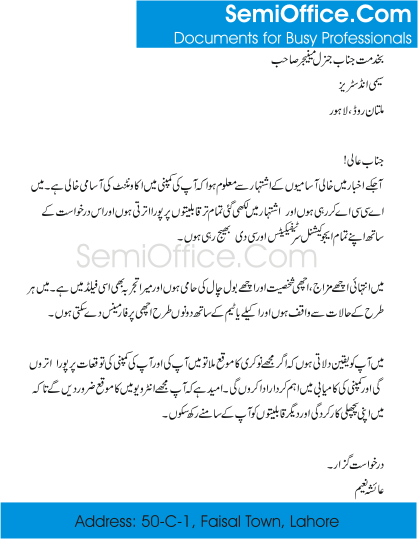Hindi and Urdu are generally considered to be one spoken language with two different literary traditions. That means that Hindi and Urdu speakers who shop in the same markets have no problems understanding each other -- they'd both say yeh kitne kaa hay for 'How much is it? ' -- but the written form for Hindi will be यह कितने का है? And the Urdu one will be یہ کتنے کا ہے؟ Hindi is written from left to right in the Devanagari script, and is the official language of India, along with English. Urdu, on the other hand, is written from right to left in the Nastaliq script and is the national language of Pakistan. It's also one of the official languages of the Indian states of Bihar and Jammu & Kashmir.
Considered as one, these tongues constitute the second most spoken language in the world, sometimes called Hindustani. In their daily lives, Hindi and Urdu speakers communicate in their 'different' languages without major problems. Both Hindi and Urdu developed from Classical Sanskrit, which appeared in the Indus Valley at about the start of the Common Era. The first old Hindi poetry was written in the year 769 AD, and by the European Middle Ages it became known as 'Hindvi'. Muslim Turks invaded the Punjab in 1027 and took control of Delhi in 1193.
They paved the way for the Islamic Mughal Empire, which ruled northern India from the 16th century until it was defeated by the British Raj in the mid-19th century. It was at this time that the language of this book began to take form, a mixture of Hindvi grammar with Arabic, Persian and Turkish vocabulary. The Muslim speakers of Hindvi began to write in the Arabic script, creating Urdu, while the Hindu population incorporated the new words but continued to write in Devanagari script.
Hindi is the official language of the Republic of India (projected to overtake China as the world's most populous nation by 2030) and the most widely spoken language in South Asia. It is also the language of a long literary tradition, both in modern prose and poetry, as well as pre-modern secular and devotional poetry. It is also a tremendously important language strategically in South Asia.In their basic form Hindi and Urdu are generally considered to be the same language written in two different scripts. After one year of instruction, you could go to India or Pakistan and talk about yourself, where you were born, where you grew up, what you do, your interests and your attraction to South Asia and South Asian languages. Each lesson builds on previous lessons in a systematic way to allow the absorption of vocabulary words in an organic manner, while reinforcing grammatical structures.
The text is accompanied by a CD as well, and a supplementary text introduces Urdu script quickly and painlessly. Films are also shown occasionally in class to reinforce the structures and idiomatic expressions that are being taught. It is also very closely related to the scripts employed to write Punjabi, Bengali, Gujarati, and Oriya among others. In the Delhi region of India the native language was Khariboli, whose earliest form is known as Old Hindi . It belongs to the Western Hindi group of the Central Indo-Aryan languages. The contact of the Hindu and Muslim cultures during the period of Islamic conquests and in the Indian subcontinent led to the development of Hindustani as a product of a composite Ganga-Jamuni tehzeeb.
In cities such as Delhi, the Indian language Old Hindi began to acquire many Persian loanwords and continued to be called "Hindi" and later, also "Hindustani". In southern India , a form of the language flourished in medieval India and is known as Dakhini, which contains loanwords from Telugu and Marathi. An early literary tradition of Hindavi was founded by Amir Khusrau in the late 13th century. From the 13th century until the end of the 18th century the language now known as Urdu was called Hindi, Hindavi, Hindustani, Dehlavi, Lahori, and Lashkari.
The Turko-Afghan Delhi Sultanate established Persian as its official language in India, a policy continued by the Mughal Empire, which extended over most of northern South Asia from the 16th to 18th centuries and cemented Persian influence on Hindustani. The name Urdu was first introduced by the poet Ghulam Hamadani Mushafi around 1780. As a literary language, Urdu took shape in courtly, elite settings. While Urdu retained the grammar and core Indo-Aryan vocabulary of the local Indian dialect Khariboli, it adopted the Nastaleeq writing system – which was developed as a style of Persian calligraphy. Well so much for the political background of these two languages i just proud to know that Urdu is not just spoken & understood in the whole of Sub-continent but also in middle east and Africa as a native language and even in the southamerican country of Guiyana.
Urdu, which was often referred to by the British administrators in India as the Hindustani language, was promoted in colonial India by British policies to counter the previous emphasis on Persian. Urdu replaced Persian as the official language of India in 1837 and was made co-official, along with English. URDU, the national language (qaumī zabān) of Pakistan and one of the fifteen officially recognized languages of India.
It is spoken, according to recent censuses made in India and Pakistan, by an estimated 53 million people in the South Asian subcontinent (Schmidt, 2004, p. 288). To this we may add the millions of people, both inside and outside the subcontinent, who use Urdu as a primary means of communication. The Panjabi-speaking population of Pakistan, for example, employ Urdu rather than their own language almost exclusively as a written and literary medium. Along with its "sister language," Hindi, with which it shares a virtually identical grammatical base, Urdu at the most basic, spoken level still functions as a convenient lingua franca, and is intelligible to vast sections of the population of South Asia. For this reason it is the preferred medium of the Indian film industry, to which many well-established Urdu writers contribute scripts and especially songs, the lyrics of which frequently follow the conventions of classical Urdu poetry.
In India, although Urdu is not and never was used exclusively by Muslims , the ongoing Hindi–Urdu controversy and modern cultural association of each language with the two religions has led to fewer Hindus using Urdu. In part because the Pakistani government proclaimed Urdu the national language at Partition, the Indian state and some religious nationalists began to regard Urdu as a 'foreign' language, to be viewed with suspicion. Urdu advocates in India disagree whether it should be allowed to write Urdu in the Devanagari and Latin script to allow its survival, or whether this will only hasten its demise and that the language can only be preserved if expressed in the Perso-Arabic script.
Fresh data from the 2011 census says that Urdu is the seventh most spoken language in India. It is one of the 22 official languages recognised in the Constitution of India, having official status in Telangana, Uttar Pradesh, Bihar, Jharkhand, Bengal and Delhi, while it has the status of official language of Jammu and Kashmir. Urdu is the national language of Pakistan and is a registered regional language of Nepal.
Hindi is the official language of the Republic of India and the most widely spoken language in South Asia. Urdu is the national language of Pakistan, one of the official languages of India, and a tremendously important strategic language in South Asia. With a common vocabulary and grammar, in their basic form, Hindi and Urdu are generally considered to be the same language written in two different scripts.
Even Sanskrit is also not a Indian language, because Sanskrit speaking nomadic people's who entered in India before first century by with their cattle. Later where ever they join with original Indians they learned the local languages and the written the books in Dravidian languages like Tamil, Telugu and Kannada only. Later 5th century only from the Dravidian languages called Sanskrit is developed and later by 12th century they kept the name Deva nagary. Thus a mixed language developed during turkic , pathan , and mughal rulers. Sindhi, balochi, punjabi, and kpk people all have their own spoken language.
And hyderabad and other places are urdu speakers.however all native people of pakistan use farsi script. The Urdu speaking populace's linguistic aspiration backed by Articles 29 and 30 of India's Constitution of India, 1950. The protection of the linguistic minority was ensured through the National Commissioner for Linguistic Minorities.
Urdu was recognized as one of the languages under the eighth schedule of India's Constitution, 1950. It is recognized as an official language in many states of India. There is no research in identifying the gap between the constitutional ideal and reality in inculcating Urdu languages officially and non-officially in India among the spoken linguistic minority.
But the Indian Constitution is not a self-enforcing document and requires the executive action and substantive infrastructure for compulsory educations in the Urdu language and mother tongue. However, despite the rise of the Muslim population, the Urdu speaking population did not rise proportionately over the last six decades. The paper takes a legal stance on the constitutional status of Urdu in India. The Hindi-Urdu Language Program offers comprehensive instruction in Hindi and Urdu together from the beginner's level. Hindi, written in the Devanagari script is the official language of the Union of India.
Urdu, written in a modified form of the Perso-Arabic script called Nastaliq, is the official language of Pakistan. In their most basic spoken form, Hindi and Urdu are mutually intelligible, particularly in urban centers in north India. Recognising that Persian, the official language of the Mughals, was rarely spoken by the common people, the government of the newly colonised British Raj decided to replace it with Hindustani, written only in the Perso-Arabic script.
This triggered a reaction from Hindus across the subcontinent, for many who had grown up with the local Devanagari alphabet now felt pushed aside by the new policy. Politics started erecting linguistic barriers between communities who were heretofore united. This was not because of the contents of the dialects themselves, but because Muslims were simply more likely to be familiar with the Perso-Arabic script and thus benefited from the change. It wasn't long after that the terms Hindi and Urdu started to take religious connotations – with Hindi being seen as a language for Hindus, and Urdu for Muslims. In Pakistan, Urdu is the official language used in instruction at government schools, at the district level administration, and in the mass media.
According to the Census of Pakistan, 1981, the number of Urdu speakers in Pakistan has been estimated at almost 11 million with the largest concentration in the metropolitan city of Karachi, and in Punjab. The Urdu speakers in India number almost 44 million with the largest numbers in the state of Uttar Pradesh, followed by Bihar, Andhra Pradesh, Maharashtra and Karnataka, which together account for 85% of the national Urdu-speaking population. Delhi still enjoys being the major centre of Urdu literature and publishing. Urdu is also spoken in countries surrounding India and Pakistan, such as Afghanistan, Bangladesh and Nepal. Practically, Urdu has become the culture language and lingua franca of the South Asian Muslim diaspora outside the sub-continent, especially in the Gulf and the Middle East, Western Europe, Scandinavia, U.S.A. and Canada. The history and origins of any language will have complicated and lateral developments.
It is difficult for any language to have a linear and time lined progression. Similarly, the evolution or origin of Urdu has multiple theories surrounding its existence and growth. However, being itself is an essence of what true integration of cultures might mean. Hindustani was the language whose grammar and syntax was 'Hindi' and whose script was 'Urdu'. It was this language that was spoken, written and expounded by the great minds of its time, including Amir Khusrau. The Hindustani or Hindavi language is what later was referred to as Urdu, but it was laden heavily with vocabulary from both Sanskrit and Persian.
Many linguists count both Hindi and Urdu as the same language because of their grammar and vocabulary similarities. Many others cite it as a socio-political reason for reading and counting them as two separate languages. Hence Urdu emerges perhaps as a wonderful amalgamation of cultures that decided to flourish by taking the best of each other. And in the course, creating a linguistic and literary treasure that finds keepers till date.
The Delhi Sultanate had made Persian as their official language, and this continued even during the Mughal Empire. Amir Khusrau in the 13th century was a famous scholar who wrote his renditions and poems in Hindavi. Though the language was the written and spoken language of the region, it was only at the end of Aurangzeb's rule in the 18th century that it began to be called Zaban-e-Urdu.
Before that, the language was known by its many names, including Hindi, Hindavi, Dehlavi, etc., and it was the language of all irrespective of them being Hindus or Muslims. It flourished in the elite and courtly surroundings retaining its core vocabulary from the Indo-Aryan language base akin to the local Khariboli but its writing or script was adopted in the Persian style of calligraphy. Historically, Hindustani developed in the post-12th century period under the impact of the incoming Afghans and Turks as a linguistic modus vivendi from the sub-regional apabhramshas of north-western India. Its first major folk poet was the great Persian master, Amir Khusrau (1253–1325), who is known to have composed dohas and riddles in the newly-formed speech, then called 'Hindavi'. Through the medieval time, this mixed speech was variously called by various speech sub-groups as 'Hindavi', 'Zaban-e-Hind', 'Hindi', 'Zaban-e-Dehli', 'Rekhta', 'Gujarii. 'Dakkhani', 'Zaban-e-Urdu-e-Mualla', 'Zaban-e-Urdu', or just 'Urdu'.
By the late 11th century, the name 'Hindustani' was in vogue and had become the lingua franca for most of northern India. A sub-dialect called Khari Boli was spoken in and around Delhi region at the start of 13th century when the Delhi Sultanate was established. Khari Boli gradually became the prestige dialect of Hindustani (Hindi-Urdu) and became the basis of modern Standard Hindi & Urdu. Urdu is the sole national, and one of the two official languages of Pakistan . It is spoken and understood throughout the country, whereas the state-by-state languages are the provincial languages, although only 7.57% of Pakistanis speak Urdu as their first language. Its official status has meant that Urdu is understood and spoken widely throughout Pakistan as a second or third language.
It is used in education, literature, office and court business, although in practice, English is used instead of Urdu in the higher echelons of government. Article 251 of the Pakistani Constitution mandates that Urdu be implemented as the sole language of government, though English continues to be the most widely used language at the higher echelons of Pakistani government. MACIC conducts regular part time courses in two major Indian languages - Hindi and Urdu.
Hindi is the fourth most spoken language of the world, the mother tongue of around 258 million people, and the official language of India in addition to English. Outside India, a considerable proportion of population use Hindi in more than 20 countries. Urdu is a member of the Indo-European family of languages; and, like most of those spoken in the northern half of the subcontinent, it belongs to the Indo-Aryan subgroup. Ultimately it is derived from Sanskrit, the classical language of India, or more accurately from its colloquial form, known as Prakrit, which is commonly referred to as "Middle Indo-Aryan" . The modern languages of north India, such as Bengali, Gujarati, and Panjabi, to which Urdu and Hindi are fairly closely related, emerged from their MIA parents around 1000 C.E., but little evidence exists for their earliest form.
I speak my language at home, with my friends, family and relatives. I feel I am the representative of my nation, India when I speak in Hindi. It is one of the Ancient language of the world and Hindi is amongst the most widely spoken languages in the world, due to the large population of India. According to some estimates, about 500 million people in India and abroad are native speakers of Hindi and the total number of people who understand the language may be as high as 800 million. Hindi evolved from Sanskrit, by way of the Middle Indo-Aryan Prakrit languages and Apabhramsha of the Middle Ages. Standard Hindi derives much of its formal and technical vocabulary from Sanskrit.
It is sometimes demoralizing to see that despite of being the National Lanuage of India and good number of people living in the Uk, Hindi is not very popular in Media, Education System and other walks of life. The diverse linguistic heritage of Nepal stems from various language groups including Tibeto-Burman, Indo-Aryan, and numerous indigenous dialects. According to the 2011 census, about 2.6% of the residents were Urdu speakers.
The official language of Nepal is Nepali, while Urdu is a registered regional dialect of Nepal. Some of the local dialects spoken in the southern Madhesh area include Urdu, Bhojpuri, Awadhi, and Maithili. No region in Pakistan uses Urdu as its mother tongue, though it is spoken as the first language of Muslim migrants in Pakistan who left India after independence in 1947. Urdu was chosen as a symbol of unity for the new state of Pakistan in 1947, because it had already served as a lingua franca among Muslims in north and northwest British India.
It is written, spoken and used in all provinces/territories of Pakistan, although the people from differing provinces may have different native languages. In 1973, Urdu was recognised as the sole national language of Pakistan – although English and regional languages were also granted official recognition. And Hindi with Muslims and Hindus, respectively, that started in the early 19th century reached its culmination in the first quarter of the 20th century. The formation of voluntary language associations for these languages and the development of both Muslim and Hindu revivalism strengthened this identification. This congruence of linguistic and religious identities not only increased language conflict between Urdu and Hindi but also led to the expanded use of Hindustani. In the wake of the Indian independence movement, Gandhi saw the potential for the use of Urdu and Hindi to produce political conflict and so promoted Hindustani as a symbol of unity.























No comments:
Post a Comment
Note: Only a member of this blog may post a comment.